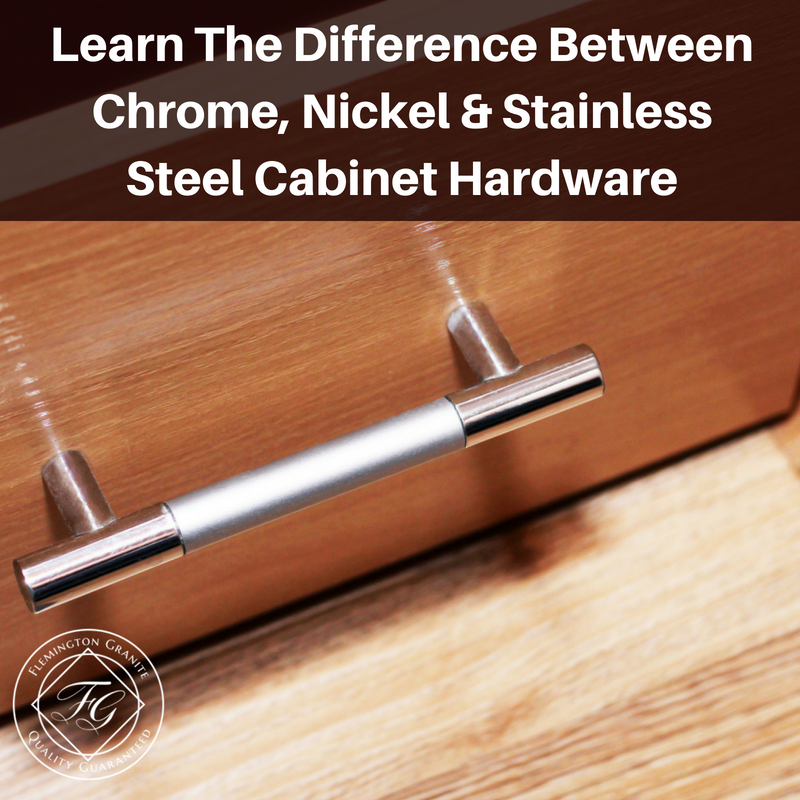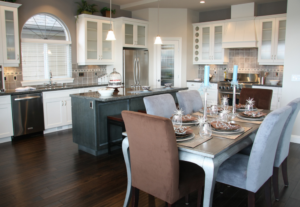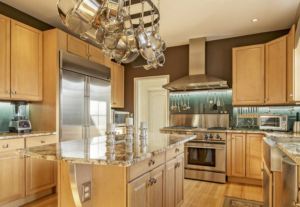
Your kitchen is one of the most important areas of your home. It’s a social gathering place for your family, often the same for company when they visit, and it’s where you spend much of your free time as you prepare meals, and much more. This is one of the reasons why a kitchen is a make or break factor in the value of a home, and is often one of the first things to be remodeled when making your home truly yours.
However, when one thinks about remodeling the kitchen, they often think about their cabinets, countertops and appliances. People often overlook the significance of cabinet hardware itself, and the difference a simple change of this can make in the overall atmosphere, personality and value of a kitchen.
So, what do we mean by cabinet hardware exactly? We obviously don’t mean the physical cabinets themselves, which are a whole other ball game. We’re actually referring to the knobs, hinges, frames and handles attached to your cabinets. These are obviously very functionally important, but people often underestimate the importance of the materials you choose for this, as well as the complementing aesthetic to go with the rest of your kitchen’s motif.
There are an infinite number of styles when it comes to cabinet hardware, and it’s entirely possible to mix and match these to great effect. However, regardless of the general aesthetic style you choose, you find yourself presented with three basic choices when it comes to base material. These are from, nickel, and stainless steel.
In the past, there have been a great many other popular materials such as brass, iron, and even wood. However, these materials are susceptible to wear and tear, especially wood.
So, which of these three modern materials is best for you? Well, there’s no one right answer to that question. Let’s take a look at all three, and weigh their pros and cons, and with that information, hopefully you can determine which of these is best for your specific needs.
Nickel
Nickel, as a material, is often misunderstood. Few if any examples of cabinet hardware are solid nickel, as it’s not a very practical metal in its pure state. It has, however, long been used as a plating material to cover something composed of a different metal base. This is in fact why the American five cent coin has colloquially come to be known as a nickel – traditionally, this coin has been plated with nickel, with copper or steel as a base depending on time period.
Nickel cabinet hardware can take on a variety of appearances from a smooth polish, a modern brushed aesthetic, or an antiqued, faded and aged appearance. When it comes to styles, it’s probably one of the more diverse of the choices as a result.
However, it’s not as durable as something like stainless steel. It can flake, it can scratch, and in some cases, it can even be corroded depending on what it’s been exposed to. This means that if durability and longevity are your primary concerns, you may not want to consider nickel.
Aside from these vulnerabilities, nickel is best suited in either contrasting kitchens where darker cabinets are countertops are present, or complementing lighter, softer and warmer kitchens. With its ability to take on a silvery or coppery tone, it’s a popular choice when going for a more traditional or country style of kitchen.
Chrome
Like nickel, chrome is a composite material. It’s usually a or iron plated with chromium. Unlike nickel, chrome is less diverse in the appearances that it can take on. When people think of chrome, they think of gleaming, polished and shiny metal. It was once a very popular material for the trim of vehicles for this reason.
Chrome is less susceptible to corrosion, but the plating can peel and flake over time. The biggest problem with chrome, however, is the difficulty involved in removing stains, tarnishing and fingerprints. It takes quite a bit of effort to buff and polish chrome fixtures and cabinet hardware. This has been one of the larger contributors to its decline in popularity in recent times.
Despite being largely less popular than the other materials at the moment, it does have its appeal. It can achieve a distinct modern and contemporary look, and does complement lighter, area and highly sunlit kitchens where it can blend in naturally.
Stainless Steel
Stainless steel is different in its composition from the other two. It’s usually a steel alloy reinforced with chromium or nickel to add to its durability and resistance to chemical influences. Stainless steel is lightweight, durable and probably one of the more affordable materials as well.
Stainless does have a distinct look, being soft and reflective, sometimes brushed. It doesn’t have the gleam associated with chrome, nor does it have the versatility and appearance possible with nickel.
The advantage of stainless is obvious in its very name. It doesn’t flake, it’s very easy to clean, it doesn’t tarnish nor corrode under normal circumstances. This means that of the materials, it has the greatest longevity. The trade-off is that it doesn’t really fit in to quite as many diverse styles of kitchen due to its distinct look.
Stainless steel is often associated with contemporary kitchens, due in large part to the popular styles of kitchen hardware as far as form factor goes when using this material. However, don’t let that rule it out if you’re going for a traditional kitchen. It’s entirely possible to blend durable, attractive stainless steel cabinet hardware into a traditional kitchen if you choose the proper style of handles, and have the right color coordination for it to blend nicely. A complementing kitchen with warmer earth tones has been known to work quite well with this.
To learn more about the importance of your cabinet hardware, and how to best coordinate it with your planned kitchen, fill out our contact form. We love to tell you about the many popular styles of cabinet hardware, and the plethora of other, novel and modern materials that you have to choose from. We’re here to help.









